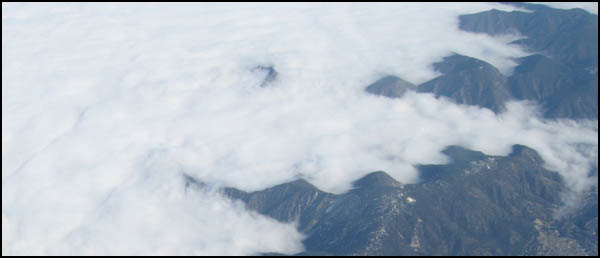AIRMETs (WAs) are advisories of significant weather phenomena but describe conditions at intensities lower than those which require the issuance of SIGMETs. AIRMETs are intended for dissemination to all pilots in the preflight and en route phase of flight to enhance safety.
AIRMETが発令されるのは危険な気象現象が発生する時ですが、SIGMETの基準よりも緩やかです。AIRMETの目的は飛行準備(Preflight)を行っている操縦士や飛行中の航空機に危険な天候情報を伝えてフライトの安全性を高める物です。
SIGMETととの違いは、SIGMETがSevereレベルで、AIRMETがModerateレベル と IFRです。
どちらも危険ですが、
SIGMETの方が危険性が高いと覚えておいて下さい。
There are three AIRMETs: Sierra, Tango, and Zulu. After the first issuance each day, scheduled or unscheduled bulletins are numbered sequentially for easier identification.
AIRMETには3種類が有って「Seirra, Tango, Zulu」と区別されています。そして分りやすい様に、語尾に順番通りに数字が付けられています。
- AIRMET Sierra describes IFR conditions and/or extensive mountain obscurations.
「S」は計器飛行状態や山岳地帯が雲に覆われてる状態。
- AIRMET Tango describes moderate turbulence, sustained surface winds of 30 knots or greater, and/or nonconvective low-level wind shear.
「T」は
乱気流、地上風30ノット以上、そして低高度ウインドシェア(積乱雲関連を除く)
- AIRMET Zulu describes moderate icing and provides freezing level heights.
「Z」はModerate Icing (着氷) と 気温が0度になる高度、Freezing Level。
- AIRMET Sierra Tango, Zuluは頻繁に耳にするので覚えておいた方が良いでしょう。

Mountain Obscurations. AIRMET Sierraが出るかな?山の側面に雲が衝突。 左側はIFRの様です。
found on the Aviation Weather Center webpage at http://aviationweather.gov, are graphical forecasts of en-route weather hazards valid at discrete times no more than 3 hours apart for a period of up to 12 hours into the future
図形式になったAIRMETでAWCのサイトで閲覧する事が可能です。 内容は通常のAIRMETとほぼ同じです。
- Instrument flight rule conditions (ceiling < 1000' and/or surface visibility <3 miles)
- Mountain obscuration
- Icing
- Freezing level
- Turbulence
- Low level wind shear (LLWS)
- Strong surface winds
G-AIRMETs provide a higher forecast resolution than text AIRMET products. Since G-AIRMETs and text AIRMETs are created from the same forecast “production” process, there exists perfect consistency between the two. Using the two together will provide clarity of the area impacted by the weather hazard and improve situational awareness and decision making.
G-AIRMETは図で表されているので、理解しやすくなっています。 通常のテキストのAIRMETと同じ方法で作られていますので、両方とも同じ内容です。 両方を使う事で、より理解が高まります。
It should be taken into consideration that the hazardous weather starts immediately after the 00 hour forecast unless there is a defined initiation or ending time for the hazardous weather. The same would apply after the 03 hour forecast. The user should assume the hazardous weather condition is occurring between the snap shots unless informed otherwise. For example, if a 00 hour forecast shows no hazard, a 03 hour forecast shows the presence of hazardous weather, and a 06 hour forecast shows no hazard, the user should assume the hazard exists from the 0001 hour to the 0559 hour time period.
注意。 00Z、03Z, 06Zと3時間毎の天候を表示します。注意点はそれらの予報はその時刻だけです。 例えば12Zの場合でしたら、12:00Zピッタリの天候予報ですが、11:59Zまで と12:01Z以降の事は含まれていません。
例えば: 00Zと06Zに悪天候が無くて、03Zに悪天候が予測されているとすると、その悪天候の可能性は00:01Zから05:59Zまでと5時間58分間(約6時間)の可能性もあります。(逆に1分間だけも否定は出来ません。) まあ、細かい区切りが指定されてないのが問題なのでしょう。 実際は、そこまで厳しく時間設定をしてるとは考え難いです。 でも、賢明な人は最悪のケースも考えておくべきでしょう。
次へ
SIGMET : AIRMET : Severe Weather Watch : Center Weather Advisory : intro